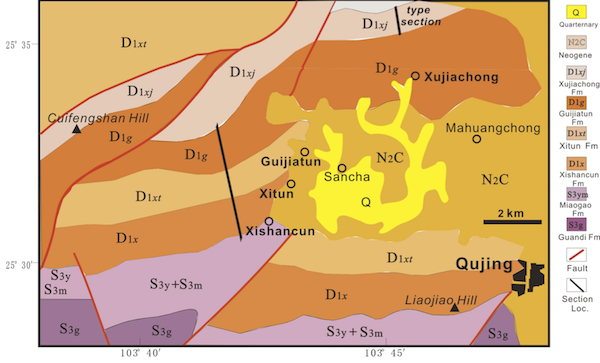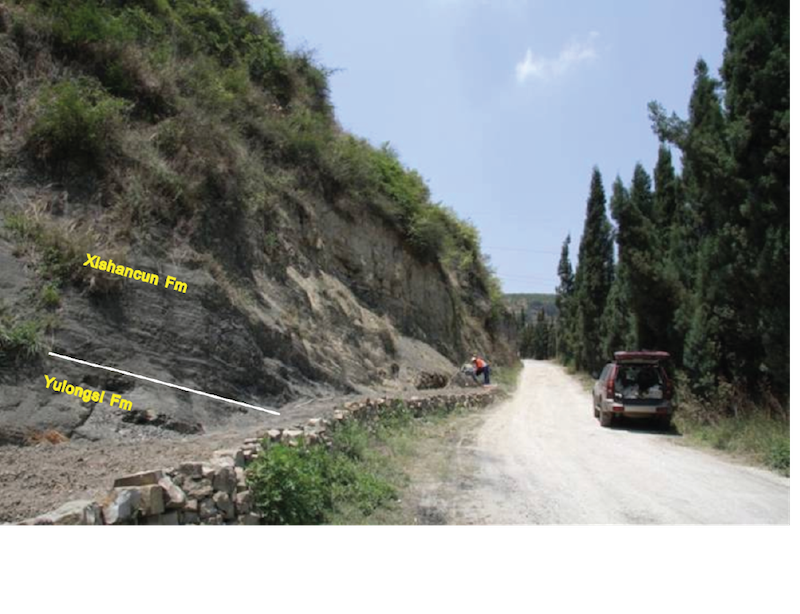Xishancun Fm
Type Locality and Naming
The type section is located at Xishancun Village of western Qujing City, Yunnan Province. It was named by Second Team of Yunnan Petroleum Geology in 1961 and reviewed by Zhang Xinping in 1966, who assigned it as a formation of Cuifengshan Gr.
Synonym: The No. 8 Team of Second Yunnan Geological Survey used the name Xiaxishancun Formation in 1978, because the village name is Xiaxishancun not Xishancun
[Figure Simplified geological map showing the locations of the type sections of Xishancun Fm (D1 x), Xitun Fm (D1 xt,), Guijiatun Fm (D1 g) and Xujiachong Fm (D1 xj) of Cuifengshan Gr in the West Hill of Qujing City, Yunnan Province.]
Lithology and Thickness
Clayey sandstone. The Formation, 224 m thick, is characterized in the Lower part by yellowish-green and grayish-black, silty mudstone intercalated with fine to medium grained quartz sandstones or alternating sandstone and mudstone, of which the sandstone beds increase upward, thin planar or lenticular bedding with 1-3 cm thick for each single bed. In the Upper part, it consists of gray-white thin to medium bedded fine-grained lithic-quartz sandstone intercalated with mudstone and silty mudstone. The sedimentary structures include grading bedding, low-angular cross bedding, planar oblique bedding, ripple marks and wash structure in sandstone and horizontal bedding in mudstone and silty mudstone with fragments of plant, fish, bivalve and other fossils. Meanwhile, the trace makers and bioturbation structures are commonly seen.
[Figure Outcrop of the Xishancun Formation forming escarpment, near Xiaxishancun Village.]
Relationships and Distribution
Lower contact
It rests conformably on the Silurian black shale of Yulongsi Fm.
[Figure Boundary (white line) between Xishancun Fm and underlying Yulongsi Fm (Silurian) on the roadside.]
Upper contact
It has conformable contact with overlying Xitun Fm.
Regional extent
The formation is restrictively distributed in the eastern Yunnan.
GeoJSON
Fossils
The muddy siltstones and shales yield plants, fish, bivalves, ostracods, and other fossils including: Fish Polybranchiaspis liaojiaoshanensis-Laxaspis qujingensis-Dongfangaspis Assemblage; plant Uncatoella verticillata- Zosterophylum spp.Ass.; Spore Streelisporites newportensis-Chelinospora and Synorisporites verrucatus-Apiculiretusispora plicata Ass.; Acritarch Dactylofusa cabottii; and Bivalves Dysodonta departi-Leiodysodontaguangxiensis-Leptodoesma lianhuashanensis Ass., and Brachiopda Lingula sp.
Age
Depositional setting
This formation might have been formed in delta environment including prodelta, delta-front and delta-plain facies.
Additional Information


